Themed collection PCCP Emerging Investigator Lectureship Award Winners

Photo-isomerization of the isolated photoactive yellow protein chromophore: what comes before the primary step?
The electronic and nuclear changes that take place before isomerisation sets in for the PYP chromophore anion are captured.

Phys. Chem. Chem. Phys., 2022,24, 1305-1309
https://doi.org/10.1039/D1CP05259D
Caveat when using ADC(2) for studying the photochemistry of carbonyl-containing molecules
We highlight a shortcoming of the (SCS)-ADC(2) method when studying the photophysics and photochemistry of carbonyl-containing molecules.
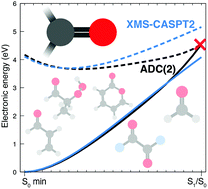
Phys. Chem. Chem. Phys., 2021,23, 12945-12949
https://doi.org/10.1039/D1CP02185K
Electrostatics determine vibrational frequency shifts in hydrogen bonded complexes
The shifts in the acetylenic C–H stretching vibration in the C–H⋯X hydrogen-bonded complexes correlate with the electrostatic component of the stabilization energy.
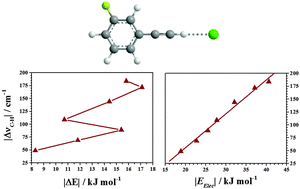
Phys. Chem. Chem. Phys., 2014,16, 25247-25250
https://doi.org/10.1039/C4CP04617J
Substitution enables significant new decay channels for a non-canonical amino acid
In this paper, we have investigated the nonradiative processes of indole (Ind) and 7-fluoroindole (7F-Ind) using high-level theoretical and spectroscopic methods.
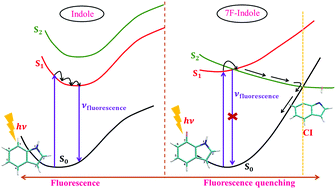
Phys. Chem. Chem. Phys., 2022,24, 17695-17702
https://doi.org/10.1039/D2CP00465H
Design and engineering of a dual-mode absorption/emission molecular switch for all-optical encryption
Photochemical reactions that produce a detectable change in the spectroscopic properties of organic chromophores can be exploited to harness the principles of Boolean algebra and design molecule-based logic circuits.
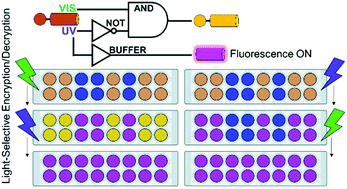
Phys. Chem. Chem. Phys., 2021,23, 25152-25161
https://doi.org/10.1039/D1CP03823K
Monitoring the active sites for the hydrogen evolution reaction at model carbon surfaces
We determine the active sites for the H2 evolution on carbon in acid with atomic resolution using scanning tunneling microscopy and density functional theory. While terraces remain inactive, the most active sites are found at steps and defects.
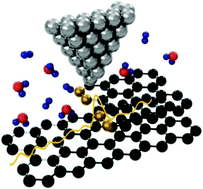
Phys. Chem. Chem. Phys., 2021,23, 10051-10058
https://doi.org/10.1039/D1CP00434D
Full triples contribution in coupled-cluster and equation-of-motion coupled-cluster methods for atoms and molecules in strong magnetic fields
Finite-field EOM-CCSDT: a highly accurate method for the theoretical prediction of excitation energies and electronic spectra in strong magnetic fields.
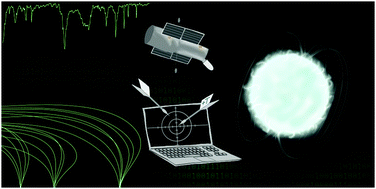
Phys. Chem. Chem. Phys., 2020,22, 23522-23529
https://doi.org/10.1039/D0CP04169F
A molecular perspective on Tully models for nonadiabatic dynamics
We present a series of standardized molecular tests for nonadiabatic dynamics, reminiscent of the one-dimensional Tully models proposed in 1990.
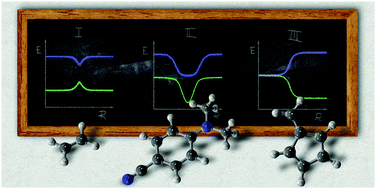
Phys. Chem. Chem. Phys., 2020,22, 15183-15196
https://doi.org/10.1039/D0CP01353F
Exploring ultraviolet photoinduced charge-transfer dynamics in a model dinucleotide of guanine and thymine
We unequivocally demonstrate that the Franck–Condon excited states of 2′-deoxyguanosine 3′-monophospate 5′-thymidine are significantly delocalised across both nucleobases, and mediate ultrafast exciplex product formation.
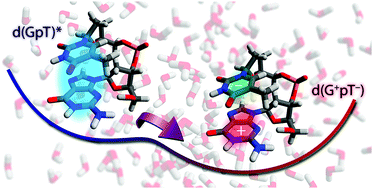
Phys. Chem. Chem. Phys., 2019,21, 14407-14417
https://doi.org/10.1039/C8CP07864E
Non-radiative decay of an eumelanin monomer: to be or not to be planar
The planar and nonplanar non-radiative decay channels of eumelanin monomer.
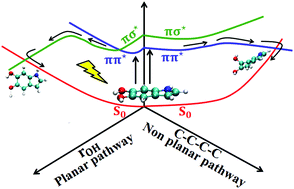
Phys. Chem. Chem. Phys., 2019,21, 6635-6642
https://doi.org/10.1039/C9CP00246D
Machine learning prediction of interaction energies in rigid water clusters
A new machine learning based approach combining support vector regression (SVR) and many body expansion (MBE) that can predict the interaction energies of water clusters with high accuracy (for decamers: 2.78% of QM estimates).
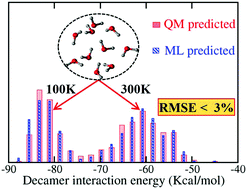
Phys. Chem. Chem. Phys., 2018,20, 22987-22996
https://doi.org/10.1039/C8CP03138J
Characterising the evaporation kinetics of water and semi-volatile organic compounds from viscous multicomponent organic aerosol particles
Here we present methods to simultaneously investigate diffusivities and volatilities in studies of evolving single aerosol particle size and composition.
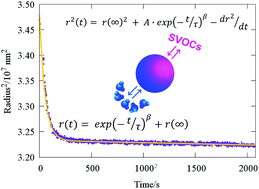
Phys. Chem. Chem. Phys., 2017,19, 31634-31646
https://doi.org/10.1039/C7CP05172G
The nature of selenium hydrogen bonding: gas phase spectroscopy and quantum chemistry calculations
Charge transfer interactions, along with electrostatic and polarization interactions, are important for the strength of hydrogen bonding when poorly electronegative atoms act as hydrogen bond acceptors.
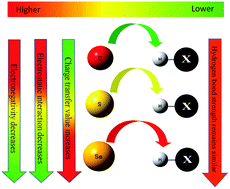
Phys. Chem. Chem. Phys., 2017,19, 24179-24187
https://doi.org/10.1039/C7CP05265K
Atomistic non-adiabatic dynamics of the LH2 complex with a GPU-accelerated ab initio exciton model
We present GPU-accelerated ab initio molecular dynamics simulations of nonadiabatic dynamics in the LH2 complex in full atomistic detail.
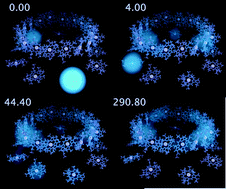
Phys. Chem. Chem. Phys., 2017,19, 14924-14936
https://doi.org/10.1039/C7CP00492C
Quantum molecular motion in the mixed ion-radical complex, [(H2O)(H2S)]+
The cation dimer of water and hydrogen sulfide, [(H2O)(H2S)]+, serves as a fundamental model for the oxidation chemistry of H2S.
![Graphical abstract: Quantum molecular motion in the mixed ion-radical complex, [(H2O)(H2S)]+](/en/Image/Get?imageInfo.ImageType=GA&imageInfo.ImageIdentifier.ManuscriptID=C6CP05299A&imageInfo.ImageIdentifier.Year=2016)
Phys. Chem. Chem. Phys., 2016,18, 27450-27459
https://doi.org/10.1039/C6CP05299A
The effect of sequence on the ionization of guanine in DNA
Charge–dipole interactions are the crucial factors in the accurate estimation of ionization energy of guanine in DNA.
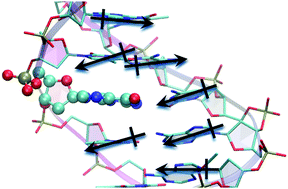
Phys. Chem. Chem. Phys., 2016,18, 6526-6533
https://doi.org/10.1039/C5CP07804K
Initial stages of water solvation of stepped platinum surfaces
Steps act as anchoring points for water adsorption and dominate water structures on stepped platinum surfaces.
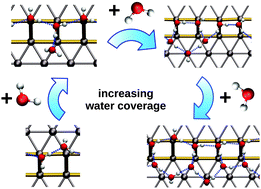
Phys. Chem. Chem. Phys., 2016,18, 3416-3422
https://doi.org/10.1039/C5CP04468E
The importance of current contributions to shielding constants in density-functional theory
The sources of error in the calculation of nuclear-magnetic-resonance shielding constants determined by density-functional theory are examined.
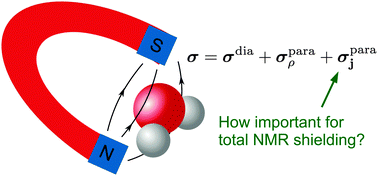
Phys. Chem. Chem. Phys., 2015,17, 18834-18842
https://doi.org/10.1039/C5CP02682B
Singlet–triplet gaps in polyacenes: a delicate balance between dynamic and static correlations investigated by spin–flip methods
In this work, we use various spin–flip methods to benchmark the singlet triplet (ST) gaps of small polyacenes and show that the error in the ST gaps with respect to the experiment is small and does not increase appreciably with the system size.

Phys. Chem. Chem. Phys., 2015,17, 9849-9856
https://doi.org/10.1039/C5CP00214A
Prediction of enhanced solvent-induced enantioselectivity for a ring opening with a bifurcating reaction path
A fully atomistic molecular dynamics simulation predicts enhance induction of enantiomeric excess in the products of a reaction with a bifurcating reaction coordinate, when run in a chiral solvent.

Phys. Chem. Chem. Phys., 2015,17, 8372-8381
https://doi.org/10.1039/C4CP05078A
Spectroscopic and ab initio investigation of 2,6-difluorophenylacetylene–amine complexes: coexistence of C–H⋯N and lone-pair⋯π complexes and intermolecular coulombic decay
Hydrogen bond and lone-pair⋯π interactions can coexist.
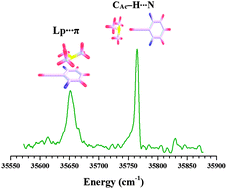
Phys. Chem. Chem. Phys., 2015,17, 434-443
https://doi.org/10.1039/C4CP03445G
Sensitized excited free-radical processes as read–write tools: impact on non-linear lithographic processes
A dye-tethered TEMPO radical abstracts hydrogen upon photoexcitation enabling erasable fluorescent non-linear imaging on thin polymer films.

Phys. Chem. Chem. Phys., 2013,15, 14873-14878
https://doi.org/10.1039/C3CP51723C
Generalized trends in the formation energies of perovskite oxides
DFT study of the trends in formation energies of several families of perovskite oxides and simple physical/chemical explanations to their origin.
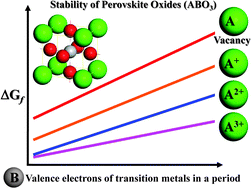
Phys. Chem. Chem. Phys., 2013,15, 7526-7533
https://doi.org/10.1039/C3CP50257K
Theoretical design and experimental implementation of Ag/Au electrodes for the electrochemical reduction of nitrate
The current imbalance in the biogeochemical cycle of nitrogen is as serious as that of carbon.
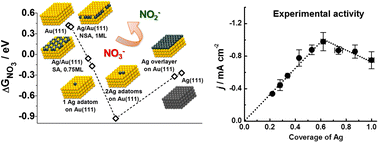
Phys. Chem. Chem. Phys., 2013,15, 3196-3202
https://doi.org/10.1039/C2CP44620K
Identifying active surface phases for metal oxide electrocatalysts: a study of manganese oxide bi-functional catalysts for oxygen reduction and water oxidation catalysis
DFT studies of a MnOx catalyst identify the surface structures present during operating conditions for water oxidation or oxygen reduction.

Phys. Chem. Chem. Phys., 2012,14, 14010-14022
https://doi.org/10.1039/C2CP40841D
Reaction dynamics of CN radicals with tetrahydrofuran in liquid solutions
The dynamics of the reaction of CN radicals with tetrahydrofuran are explored in solution using ultrafast time-resolved infra-red absorption spectroscopy.
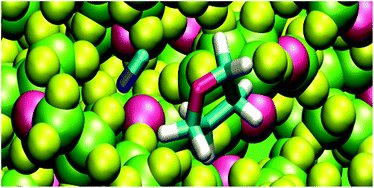
Phys. Chem. Chem. Phys., 2012,14, 10424-10437
https://doi.org/10.1039/C2CP40158D
Density functional studies of functionalized graphitic materials with late transition metals for oxygen reduction reactions
There exist systematic trends in ORR/OER activities of graphitic materials with active sites of nitrogen and transition metal atoms.
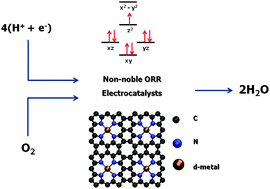
Phys. Chem. Chem. Phys., 2011,13, 15639-15643
https://doi.org/10.1039/C1CP21228A
The 1,4-phenylenediisocyanide dimer: gas-phase properties and insights into organic self-assembled monolayers
Binding in the 1,4-phenylenediisocyanide dimer is significantly larger than in the benzene dimer and serves as a prototype for organic self-assembled monolayers.
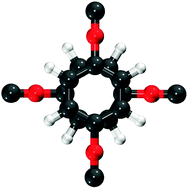
Phys. Chem. Chem. Phys., 2010,12, 82-96
https://doi.org/10.1039/B902194A
About this collection
The PCCP Emerging Investigator Lectureship aims to recognize and support the significant contribution of early career researchers in physical chemistry, chemical physics and biophysical chemistry. The Lectureship is a platform for an early career physical chemist to showcase their research to the wider scientific community. This collection includes selected articles published by the PCCP Emerging Investigator Lectureship winners.
Showcasing the 2022 PCCP Emerging Investigator Lectureship winner Dr Basile Curchod, University of Bristol, UK
Dr Curchod’s research focuses on the study of photochemistry and photophysics of molecules in silico, looking at trajectory-based methods for nonadiabatic quantum dynamics.
Previous Winners:
2021 winners - Stella Stopkowicz, University of Mainz, Germany and Stefania Impellizzeri, Toronto Metropolitan University, Canada
2019 winner - Federico Calle-Vallejo, University of Barcelona, Spain
2018 winner – Professor Debashree Ghosh, Indian Association for the Cultivation of Science.
2017 winner – Professor Ryan P. Steele, University of Utah
2016 winner – Dr David Glowacki, University of Bristol